How to use a Midea dishwasher
 A dishwasher is very similar in operation to a washing machine, however, in addition to similarities, there are many important differences that should be taken into account during operation. The easiest way is to read the official manual for using household appliances to find out important nuances, but if this is not possible, then you usually have to look for information on the Internet on different sites. To save you time, we have prepared a one-stop guide to show you how to properly use your Midea dishwasher.
A dishwasher is very similar in operation to a washing machine, however, in addition to similarities, there are many important differences that should be taken into account during operation. The easiest way is to read the official manual for using household appliances to find out important nuances, but if this is not possible, then you usually have to look for information on the Internet on different sites. To save you time, we have prepared a one-stop guide to show you how to properly use your Midea dishwasher.
Figure out how to arrange dishes
Do not rush to immediately load the dishes and start the work cycle. First you need to figure out how to place cutlery items in dish baskets. It may seem that the loading order is unimportant, because the PMM can wash everything, but if you grossly violate the rules, the dishes may not be washed even during intensive washing.
Therefore, first we will analyze in detail the order of placing dishes in the washing chamber. Most dishwashers have an interior space divided into three zones:
- The lower basket is used for the largest dishes, which are also difficult to clean. This list includes pots, pans, deep dishes and more. Also here they wash baking trays and lids, which are placed so that they do not interfere with the sprinklers;
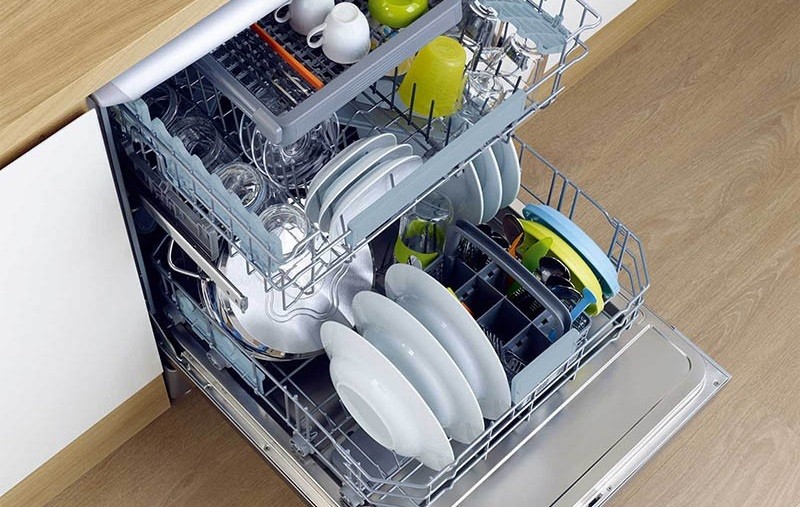
- the upper basket is designed for plates, small bowls, glasses, glasses and small, not very dirty pans;
- a basket or small tray is designed for cutlery such as spoons, forks, knives, spatulas and others. They are usually placed in compartments so that they do not lie in a pile and do not interfere with washing.
In addition to tips for arranging dishes before washing, there are also tips for handling dishes after washing. Experts advise always removing items from the bottom rack first and then moving to the top rack to prevent drippings from the dishes above from falling onto the dishes below. It is also recommended to leave glasses and other dishes with thin walls to cool, because they become very fragile when heated to high temperatures.
Rules for placing dishes
During loading, it is necessary to ensure not only that all cutlery is in its place, but also that it is positioned correctly. Check that everything is as specified.
- All deep dishes must be turned upside down, otherwise water will accumulate in it and it will not be possible to dry the products.
- Each item must be securely installed in the basket so that the water pressure cannot move it or knock it over.
- Knives and other sharp objects should be placed in a horizontal position to avoid injury. If the utensil tray is vertical, then it is better to put all the blades in the upper basket.

- Delicate glasses and other thin glassware should not touch each other or other glassware.
- Small items, such as shot glasses, are best washed by hand, as they can fall out of the basket and break during washing.
- Make sure that cutlery items do not interfere with the moving parts of the dishwasher in the washing chamber.
And as the most important general advice, experts highlight the prohibition of overloading the dishwasher. Using a machine loaded with more dishes than the instructions allow can reduce the quality of dishwashing and increase energy costs.
What is the InnoWash system?
A fairly common problem when using PMM is the inability to treat absolutely all loaded dishes with detergent. However, Midea equipment manufacturers have found a way to solve this drawback.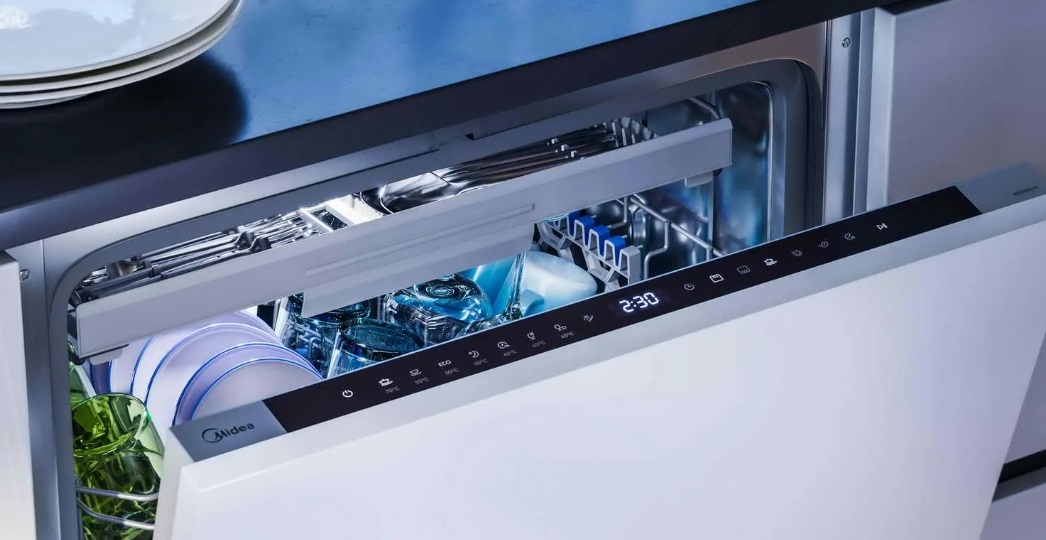
The InnoWash system allows one rocker to rotate both around a common axis and to use its own axis during the rotation of a special gear, which is located in the center of the system. Thanks to the constantly changing angle of the spray arm, water and detergent cover the entire washing chamber.
Which dishes are best left unloaded?
Almost all dishes can be washed in dishwashers, but there are a number of rules that are best followed for the safety of dishes and equipment. It is advisable to remember the following points or keep them for yourself.
- It is prohibited to wash dishes made of plastic, synthetic fibers and other non-heat-resistant materials.
Some users wash plastic food containers in dishwashers, but if there is no indication on the container that it is dishwasher safe, then it is better to refrain from using the “household helper”, as such dishes can melt under the powerful pressure of hot water.
- Do not load wooden products such as cutting boards, wooden spoons and others.

- Tableware made of tin, copper, and steel, which are susceptible to corrosion, should not be cleaned in a PMM.
- Aluminum and silverware can be washed in the dishwasher, but doing so too often can cause them to tarnish.
- It is not recommended to wash crystal as it is too fragile.
- Take care of items with glazed designs, as they will begin to fade and wear off.
- Avoid washing dishes that have been glued together because hot water and steam can melt the glue.
You should not load household appliances with overly dirty dishes that have dried food residues and grease on them - if you wash them in the PMM, then only after you have first cleared them of food and grease.
Pans also raise a lot of questions about whether they can be washed in the dishwasher. This is acceptable, but depends on the material from which the utensils are made. You cannot wash cast iron pans - their protective layer will be destroyed, and then corrosion will begin. Teflon products in PMM will suffer even more. But you can wash dishes with titanium or ceramic coating without restrictions.
You can study the bottom of the pan or the manufacturer's official instructions to find a pictogram or information that the product is not prohibited from being washed in a PMM. The icon usually looks like two plates or a plate with a glass under running water. When the sign is crossed out, you can only wash the frying pan with your own hands.
Let's figure out the means for PMM
It's time to look into specialty cleaning products. You should start with a special salt that restores the ion exchanger, which softens hard tap water. Before the first working cycle, this special salt must be loaded into the salt tank located at the bottom of the washing chamber, after first filling the salt tank with water to the brim. If this is not done, then harmful impurities from the water supply will eventually damage important components of the dishwasher. Therefore, the harder the tap water, the greater the salt consumption, which can be adjusted on the PMM control panel.
The hardness level of tap water can be determined using test strips, by the presence of plaque on taps and kettles, and also on the website of the city water utility.
Then you need to add detergent to the compartment on the door so that the machine can wash the dirty dishes. It is prohibited to add simple soap, washing powder or simple gels for manual dishwashing to the chemical compartment. You can only load special products for household appliances, which can be in the form of gel, powder or tablets.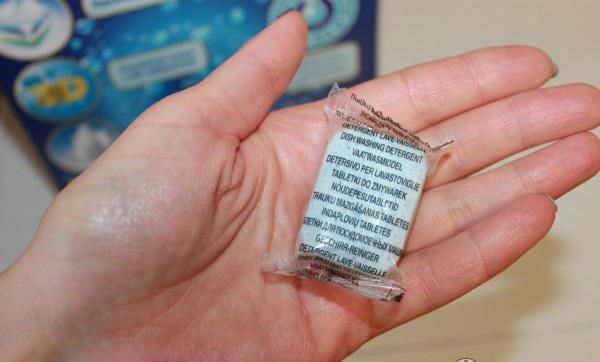
It is also important to pour rinse aid into a separate compartment on the washing chamber door. It helps get rid of stains and water droplets on dishes, and also speeds up drying, because with it the water will drain from the dishes much faster.
Does the machine require maintenance?
Caring for your machine is much easier than it seems. It is enough just to leave the door open to ventilate the washing chamber after the working cycle and avoid the formation of an unpleasant odor. You also need to remove moisture with a dry cloth inside the machine, wash the filter mesh, clean the rubber seals along the contour of the chamber, and also wipe the outer surfaces so that no drops of water and grease remain on the PMM body.
If you have a built-in dishwasher, then you should take care of the surface in accordance with what material the front panels are made of.
Follow all the recommendations of the Midea manufacturer and experts so that your “home assistant” will serve you for a long time and never disappoint with the quality of the wash.
Interesting:
Reader comments
- Share your opinion - leave a comment

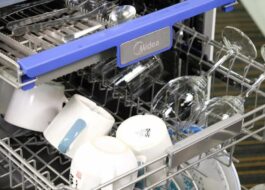
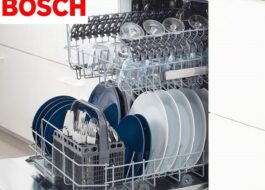
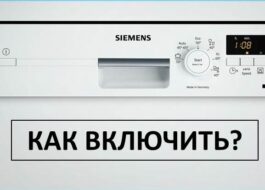


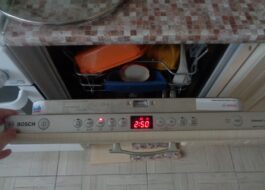














Add a comment